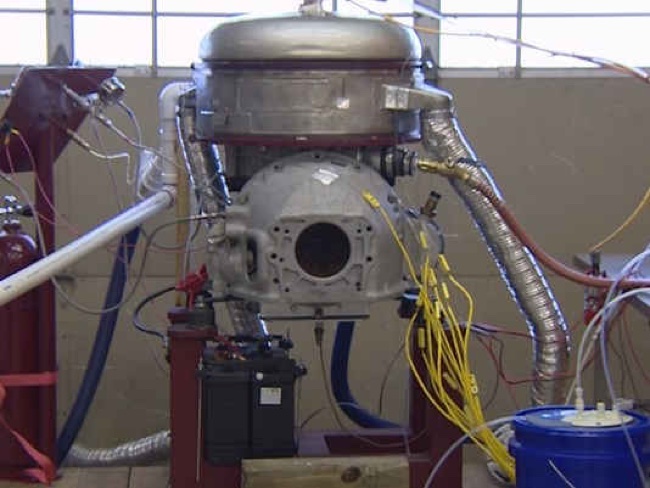
The centerpiece of MacDowell’s innovation is the Stirling engine, which was created in 1816. The closed-cycle air engine uses the expansion of hot air and the compression of cold air to generate the power needed to drive an engine. Unlike steam engines which utilize a similar principal, the Stirling engine has an internal regenerative heat exchanger that keeps the hot and cold air at the correct temperature. This recycling feature boosts the engine’s efficiency to a whopping 50 percent. For comparison, a standard internal combustion engine operates only at 14 percent efficiency.
Though mechanically sound, the Stirling engine never caught on in the 1800s, with most businesses choosing to use steam engines for their industrial applications. NASA even experimented with the engine in the early 1980’s, and was able to achieve 54 miles per gallon, but the Space Agency never went any further with the technology. MacDowell borrowed one of these Stirling engines from NASA and began experimenting with it to see if he could use the regenerative engine with 21st-century automotive know-how.
MacDowell coupled the engine with existing hybrid technology, creating a system that will deliver 58 miles per gallon to a Ford F-150 and at least 100 miles per gallon in a smaller SUV. In his model, the Stirling engine runs at a fixed RPM generating electricity that is used to charge the batteries, which drive motors that propel the vehicle.
Using this thermopile technology, a Stirling-powered vehicle can drive at highway speeds without having to recharge. MacDowell also redesigned the Stirling engine to have the dimensions and appearance of a standard four-cylinder engine, making it compatible with existing automobiles. His idea was so brilliant that Texas A&M University became involved in the project, providing MacDowell with technical expertise and a testing environment to aid in the development of the engine.
To showcase his original engine, MacDowell intends to drive an SUV across the country on less than 40 gallons of gasoline. He also plans to submit his laboratory findings to the Texas Transportation Institute, which will verify his 100 miles per gallon claims. Once proven and tested, MacDowell believes his idea will revolutionize the hybrid engine industry leading to the eventual end of the internal combustion engine. Stay tuned.




